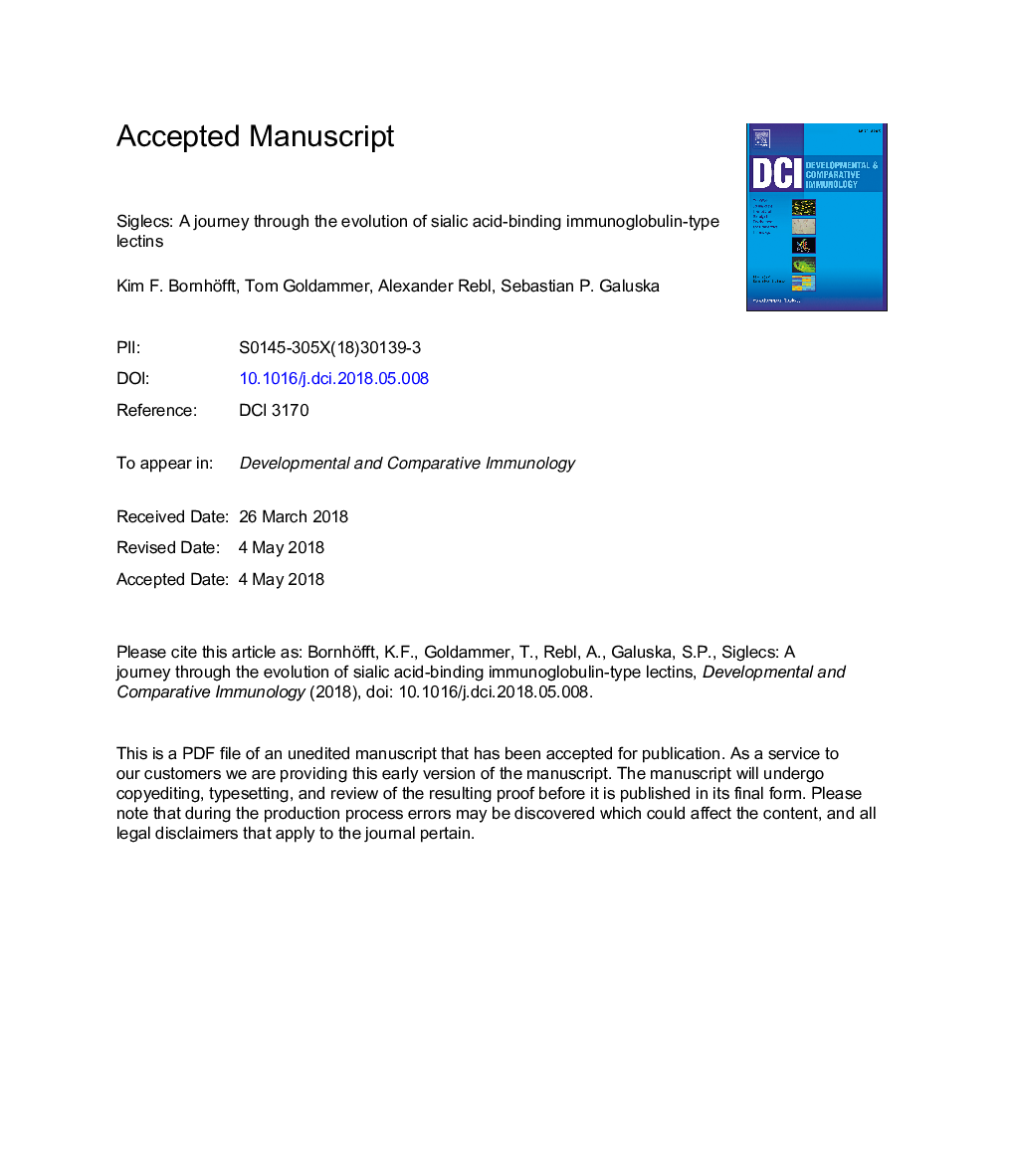| Article ID | Journal | Published Year | Pages | File Type |
|---|---|---|---|---|
| 8497691 | Developmental & Comparative Immunology | 2018 | 50 Pages |
Abstract
Siglecs (sialic acid-binding immunoglobulin-type lectins) are a family of immune regulatory receptors predominantly found on the cells of the hematopoietic system. A V-set Ig-like domain mediates the recognition of different sialylated glycoconjugates, which can lead to the activation or inhibition of the immune response, depending on the involved Siglecs. Siglecs are categorized into two subgroups: one including all CD33-related Siglecs and the other consisting of Siglec-1 (Sialoadhesin), Siglec-2 (CD22), Siglec-4 (myelin-associated glycoprotein, MAG) and Siglec-15. In contrast to the members of the CD33-related Siglecs, which share â¼50-99% sequence identity, Siglecs of the other subgroup show quite low homology (approximately 25-30% sequence identity). Based on the published sequences and functions of Siglecs, we performed phylogenetic analyses and sequence alignments to reveal the conservation of Siglecs throughout evolution. Therefore, we focused on the presence of Siglecs in different classes of vertebrates (fishes, amphibians, birds, reptiles and mammals), offering a bridge between the presence of different Siglecs and the biological situations of the selected animals.
Related Topics
Life Sciences
Biochemistry, Genetics and Molecular Biology
Developmental Biology
Authors
Kim F. Bornhöfft, Tom Goldammer, Alexander Rebl, Sebastian P. Galuska,
